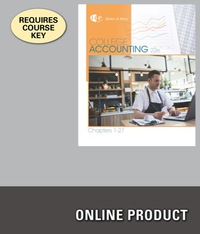Hi-Tek Manufacturing, Inc., makes two types of industrial component parts-the B300 and the T500. An absorption costing income statement for the most recent period is shown: Hi-Tek Manufacturing Inc. Income Statement Sales $ 1,631,400 Cost of goods sold 1,230, 768 Gross margin 488,632 Selling and administrative expenses 580,000 Net operating loss $ (179,368) Hi-Tek produced and sold 60.000 units of B300 at a price of $19 per unit and 12,600 units of T500 at a price of $39 per unit. The company's traditional cost system allocates manufacturing overhead to products using a plantwide overhead rate and direct labor dollars as the allocation base. Additional information relating to the company's two product lines is shown below: 8300 T500 Total Direct materials $ 400,200 $ 162,7ee $ 562,900 Direct labor $ 120, 400 $ 42,200 162,600 Manufacturing overhead 5e5, 268 st of goods sold $ 1,238,768 The company has created an activity-based costing system to evaluate the profitability of its products. Hi-Tek's ABC implementation team concluded that $56,000 and $104,000 of the company's advertising expenses could be directly traced to 1300 and T500, respectively. The remainder of the selling and administrative expenses was organization-sustaining in nature. The ABC team also distributed the company's manufacturing overhead to four activities as shown below. Activity Cost Pool (and Activity Measure) Machining (eachine-hours) Setups (setup hours) Product-sustaining (number of products) Other (organization-sustaining costs) Total manufacturing overhead cost Manufacturing Overhead $ 200,488 134,480 101,600 3300 98,43 78 2 NA Activity 1500 Total 62,900 153,180 250 328 1 2 NA NA $505,268 1. Compute the product margins for the B300 and T500 under the company's traditional costing system. 2 Compute the product margins for B300 and T500 under the activity-based costing system. 3. Prepare a quantitative comparison of the traditional and activity-based cost assignments. OOK Complete this question by entering your answers in the tabs below. Tences Required 1 Required 2 Required 3 Compute the product margins for the B300 and T500 under the company's traditional costing system. (Round your intermediate calculations to 2 decimal places and final answers to the nearest whole dollar amount.) B300 T500 Total Product margin $ 0 Red Required 2 > Complete this question by entering your answers in the tabs below. Required 1 Real sd 2 Required 3 Compute the product margins for 8300 and T500 under the activity-based costing system. (Negative product margins should be indicated by a minus sign. Round your intermediate calculations to 2 decimal places.) B300 T500 Total $ Product margin 0 Required 1 Required 2 Required Prepare a quantitative comparison of the Required 3 activity-based cost assignments. (Round your intermediate calculations to 2 deci places and "Percentage" answers to 1 decimal place and and other answers to the nearest whole dollar amounts.) B300 T500 Total % of 9% of Amount Amount Amount Traditional Cost System 96 96 9 96 %% 96 Total cost assigned to products 3 0 S Total cost B300 T500 Total










